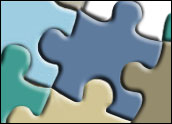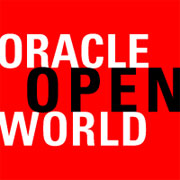
Maybe you’ve already considered this, but it just popped into my head the other day as I was thinking once again about customer experience — or CX, as some people shorten it. I’ve often said that customers experience moments of truth and that the experience should be focused on the things they care most about and that the business actually can do something about.
I make this distinction to try to focus on things that are core to relationships, and there are real pitfalls you can avoid if you take this approach.
A business is not responsible for every customer issue with a product or service. A good demarcation between what issues you own and what you empathize over might be the warranty or other declarative statements a business makes.
At least we’d like this to be true, but is it strictly speaking? Not really. There are things that a reasonable customer intuits as implied by the existence of a product. One is its ease of use, but there’s also the important area of how the customer consumes the vendor’s policies and processes.
Thinginess and Personableness
From this I came up with two layers of CX. There’s the obvious layer that we all know that consists of the stuff covered in the warranty, but then there’s a lot of stuff that isn’t defined that can make all the difference between a good and lasting relationship and someone stalking off.
The second layer of CX is about how customers experience the business entity. Layer one might include the following: Does the device work? Is the coffee hot enough but not scalding? Does the thing I sell you generally live up to the expectation for “thinginess”?
I realize I am inventing a word and that’s intentional to get us all thinking. The distaff end of a spectrum with thinginess on one end might be personableness or humanness, and it accords with the relatability of your business, its people and its processes with customers — thus the two layers of CX.
Thinginess usually is engineered into a product or service because that’s what a business does to ensure that it meets the aspirations it expresses in its communication with the market. They are the ultimate signs of thinginess. Thinginess is a one-time item; you make a product and deliver it and that’s it.
Personableness, however, is something you need throughout the customer life cycle and hopefully into the next life cycle too. (Let’s not get creepy. I simply mean buying the next iteration of the product. I am not making some allusion to vampires.)
It’s personableness that delves into your procedures, your policies and the tone you take with customers regardless of the channel they approach you on, and it’s here that most businesses need help.
What Knowledge Bases Don’t Know
Too often the systems that meet customers in channels are retreaded 20-year-old knowledge bases that originally were intended to help internal employees support customers. Somewhere along the line we got the bright idea that with a shiny new front end, these knowledge bases could do the same for end customers too.
Sometimes the knowledge base idea works well enough, helping people find easy answers to questions, thus deflecting traffic that normally would invade other channels that require monitoring.
Other times, it doesn’t work and leaves customers stranded. This also leaves behind a core of harder issues to be solved by people or possibly more intelligent systems that leverage machine learning and natural language processing.
Even with advanced intelligent systems, some customers will need to speak with you or otherwise interact directly (via chat, email, social) with a human. How easy we make that transition says a lot about how we deal with the second tier of CX.
If a customer is somewhere in your channels, that person is on a moment-of-truth quest, and the CX of your product is secondary to the CX of the quest into your processes and policies, the moment of truth. A customer’s experience of that moment of truth will determine to a great degree whether you create or strengthen a bond and ultimately whether the customer becomes an advocate or someday buys more.
Mapping the Journey
Here are two ideas for your consideration. First, keep a big picture of CX in mind, understanding that it’s not just what you can relate directly to product. Second, recognize that you need to focus on how customers consume your policies, processes, and all the rest of the fuzzy stuff around your products and brand.
That’s also called the customer journey, and it’s why I place such emphasis on journey mapping.
Products have blueprints and models; CX has journey maps — or it should. The journey map is a model for how you interact, and it will become one of the most important parts of your outreach to customers in the near future.























































